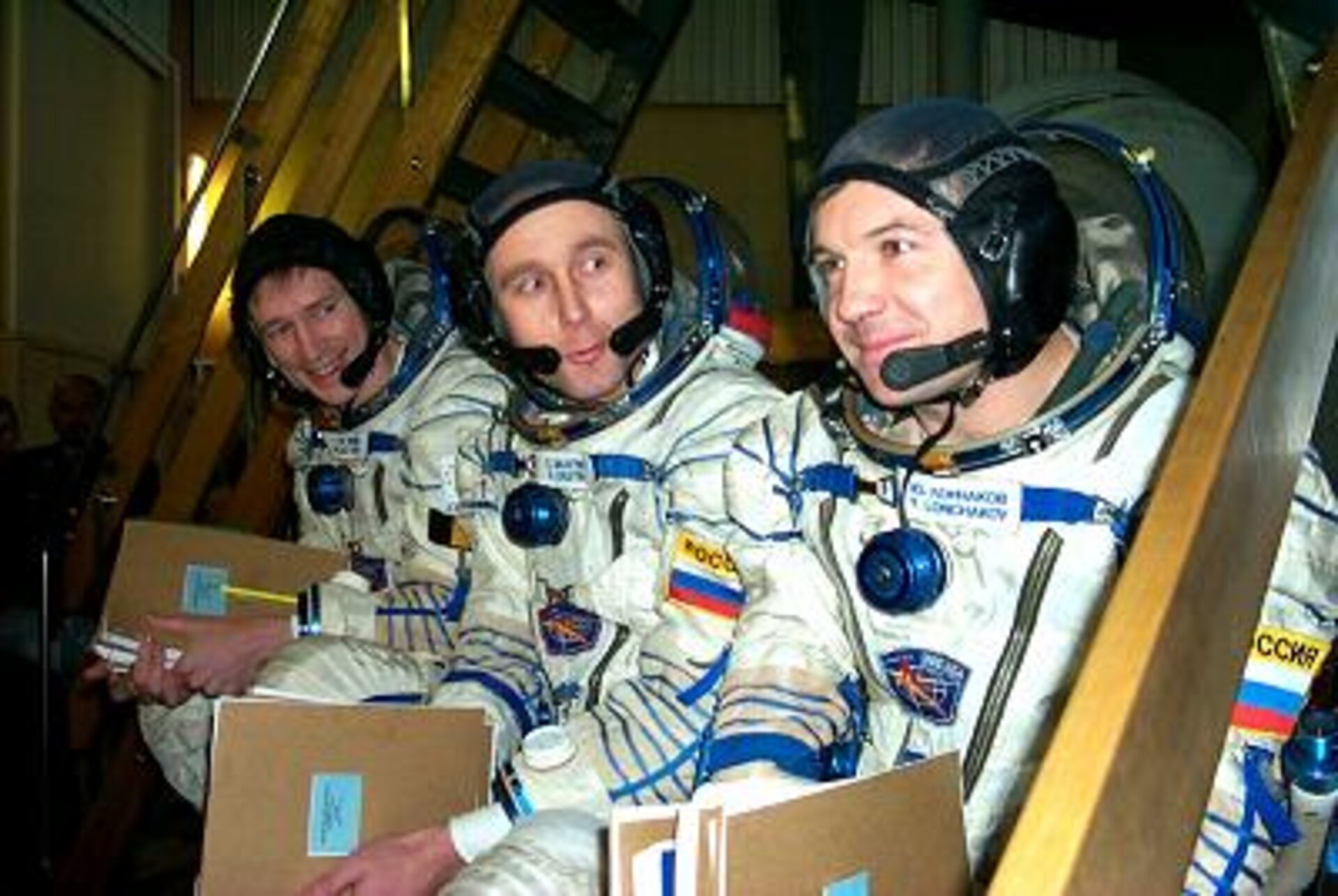ESA’s Belgian astronaut ready for Space Station mission
ESA PR 67-2002. A new Soyuz capsule will be launched into space next week on 30 October at 08:11 local time (04:11 CET) from the cosmodrome in Baikonur, Kazakhstan, carrying the European Space Agency’s first Belgian astronaut to visit the International Space Station and two Russian crew members.
Frank De Winne, a former Belgian Air Force pilot and now a member of ESA’s 16-strong astronaut corps, follows in the footsteps of a series of European astronauts who have already visited and worked on board the Space Station.
A prime task of the 11-day Odissea mission is to replace the TM-34 Soyuz vehicle currently attached to the Space Station with the new TMA-1 spacecraft, ensuring that the craft that would be used to evacuate the Station’s resident crew in an emergency is always in top condition.
De Winne will play his part as a Soyuz Flight Engineer in the test flight of the new Soyuz TMA-1 spacecraft, alongside Soyuz Mission Commander Sergei Zaletin and Soyuz Flight Engineer Yuri Valentinovich Lonchakov.

"It’s a privilege to be the first Belgian to visit the Space Station and an honour to be the first non-Russian ever to fly on the first flight of a new Russian Soyuz vehicle," said De Winne, speaking from Star City in Moscow during the final days of training before launch.
"The multi-purpose Odissea mission represents Europe’s strengthening role in the Space Station’s rapid development, and training for the mission has been challenging and very rewarding."
"I’m eagerly awaiting next week when I arrive at the Station, meet my fellow astronauts and cosmonauts on board, and finally put months of training into practice," he said.
Two days after launch the Soyuz TMA-1 with De Winne, Zaletin and Lonchakov will approach and dock with the orbiting complex some 400 km above the Earth.

De Winne, whose flight is sponsored by the Belgian Federal Office for Scientific, Technical and Cultural Affairs (OSTC), will become the fourth European astronaut to visit the International Space Station and the first European astronaut to work in both the Russian and American segments of the Space Station.
"In only two years from now, with the Columbus module added to the International Space Station, Europe will have its own permanently available laboratory in space for scientific and application-oriented experiments, technology tests and commercial services", said ESA Director of Manned Spaceflight and Microgravity Jörg Feustel-Büechl. "This flight is another important step not only in the cooperation with our Russian partners, but also for the practical preparation of European astronauts for their future role as flight engineers and scientific experimenters on the International Space Station."
During his nine day stay on board the Space Station, De Winne will carry out a programme of 23 experiments in the fields of life and physical sciences and education, including four in a new research facility - the Microgravity Science Glovebox (MSG) - an important piece of hardware designed and developed in Europe.
The MSG provides an enclosed, sealed environment in which to perform experiments on combustion, fluids and biotechnology in a safe, controlled microgravity environment.

"The experiments in the MSG are quite complex and they have relevant and positive implications for science and commercial technology on Earth. They represent a range of different disciplines and applications, all with the ultimate aim of enhancing life on Earth," said De Winne.
"The object of this flight is to get down to real science and it is a privilege to be involved in this extensive science and technology programme."
It was only in the summer of 2001 that De Winne received news that he was to begin training for this Soyuz 'taxi' mission and left the heat of Houston, USA, where he had been preparing as an ESA astronaut for a possible Space Shuttle flight.
"It was a big surprise at first but in reality the Russian approach to training isn’t too different from the European and American way - our training philosophy is to provide good learning circumstances once the tough selection phase is over," he explained.

The real challenge of this mission has been to assemble a complex payload programme of 23 experiments within a period of 8 months.
Odissea follows last April's Marco Polo mission with ESA’s Italian astronaut Roberto Vittori, and is the latest in a series of European manned missions to the Space Station.
Swedish ESA astronaut Christer Fuglesang is already in training for a mission next July, when he will fly on a Space Shuttle mission to the International Space Station. He is expected to carry out several spacewalks to attach new segments to the Space Station’s truss sections.
For further information, please contact:
ESA Media Relations Office
Tel: +33 (0)1.5369.7155
Fax: +33 (0)1.5369.7690




